It is easy to forget sometimes that birds can do weird things. By weird things I don’t mean human weird things, like for example wasting their time in wild places looking for unusual feathered animals and ticking them off a list, but things that fall outside of their usual repertoire of normal behaviour. Most birds will follow a set group of behaviours, building a nest a certain way, courting a certain way, eating a certain set of food. But birds have a certain amount of flexibility buil in as well, which is very apparent in some of the smarter birds, like crows and parrots, but can still be present in other birds too. It shouldn’t be a surprise, but it still is sometimes.
This particular example of flexibility comes from Tern Island, in French Frigate Shoals to the north of Hawaii. Although the islands are a cramped home to 18 species of seabird, the dominant and most charismatic of these are the two species of albatross, the Black-footed and Laysan Albatrosses. Towards the end of their breeding season the islands become a somewhat melancholy place as the visits by adults dwindle and then stop, and the youngsters fledge off into the vast expanse of ocean around the island. Worse still many of the youngsters still on the island were the slower growing, weaker ones, who’s parents were unable to find and deliver sufficient food, or who had lost a parent, or those who’s parents had fed them too much plastic junk and were doomed to slowly starve. Seeing birds suffer is never fun, but never more so than these trusting and uncomplaining young giants that sat all day like contemplative zen masters, meditating in the intense tropical sun.
There was one young Black-footed Albatross that was apparently not planning on going quietly into the dark night, however. Throughout the petrel and albatross order there are suposed to be only two species, the two large and vulture-like giant petrels, that feed on land. These two species make a good living eating seal carcasses and even hunting the chicks of other seabirds, and are correspondingly among the strongest legged of any of the petrels. But beyond these two species the rest of the petrels are supposed to feed excluisively at sea. But no one told this young albatross that.
Young Black-footed Albatross (Phoebastria nigripes) feeding on the carcass of a dead Laysan Albatross (Phoebastria immutabalis)
I have never been able to find another reference to this behaviour, so I can conclude that it is either vanishingly rare or simply underreported. I’d be interested if other people at albatross colonies have seen it before. I can state that the young Black-foot was indeed eating the flesh of a Laysan, and not just (as someone once suggested) playing. The hole had to have been made by an albatross, there is simply no other animal on the island capable of making it. And the hole looks fairly fresh. That said there is nothing to suggest that the Black-footed Albatross actually killed the Laysan, there was no shortage of already dead chicks around. I don’t know for certain that the youngster was starving, and sadly I don’t know if it survived, but I don’t recall anyone finding its corpse and bringing the bands back in. It is certainly possible to track down the individual bird thanks to the field-readable band, so if it ever does turn up again it should be possible to know if this bit of unorthodox feeding saved this individual and that particular bit of flexibility.
***
I took all the images, but they belong to the USFWS and are therefore Public Domain.

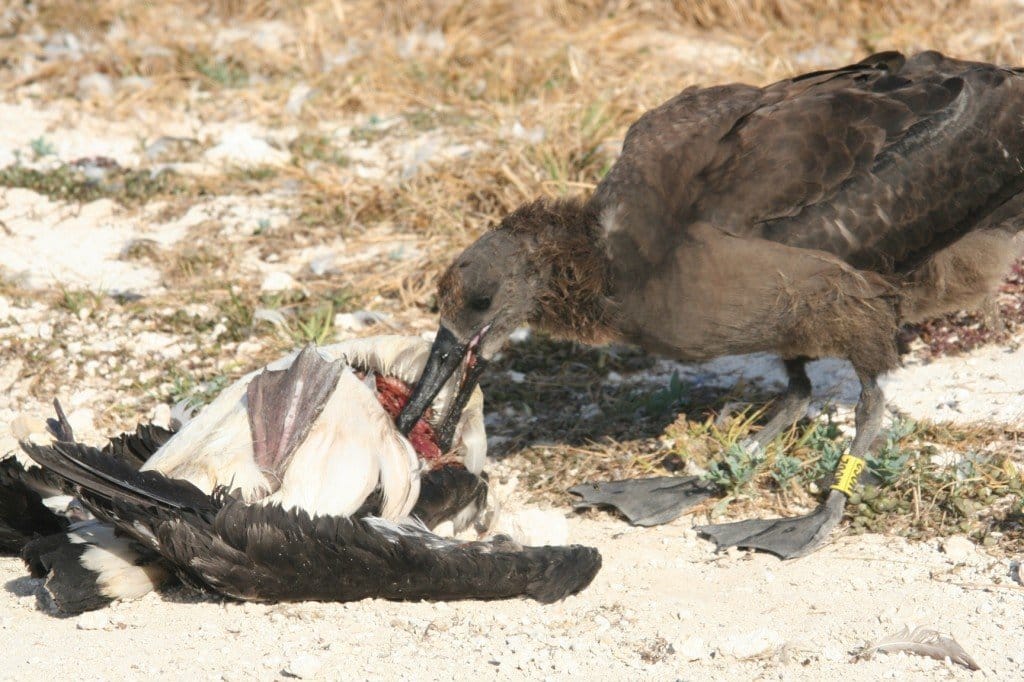
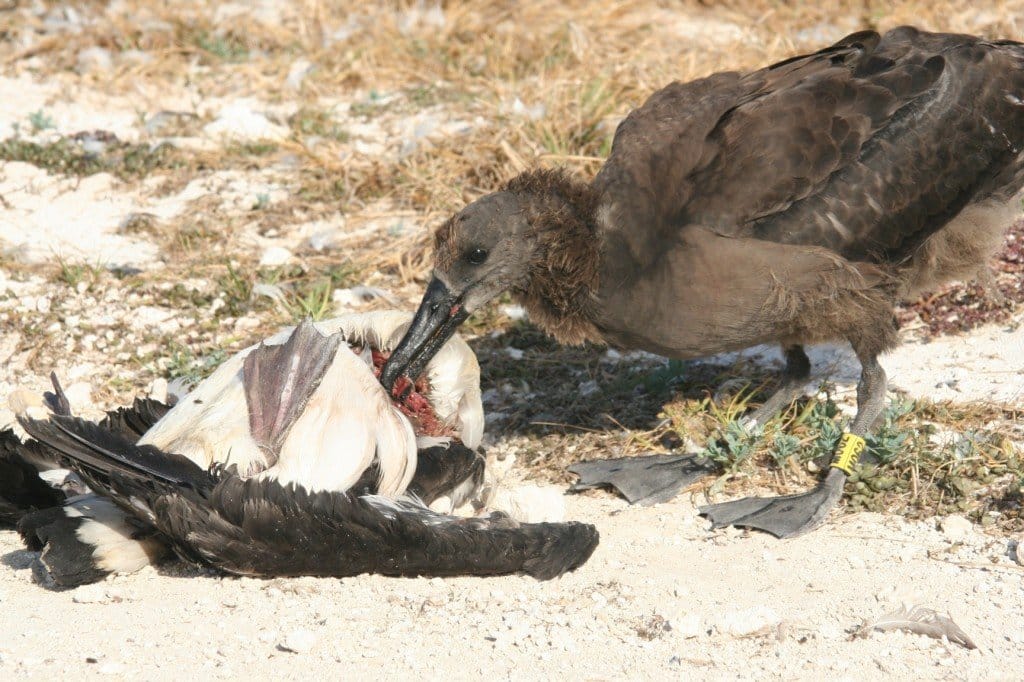
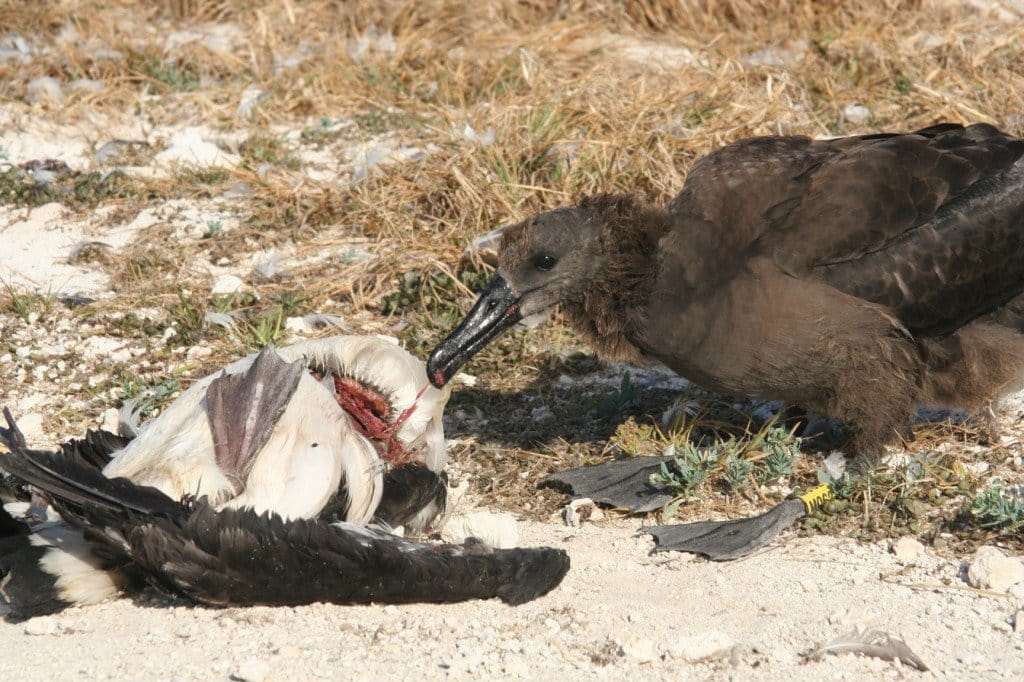
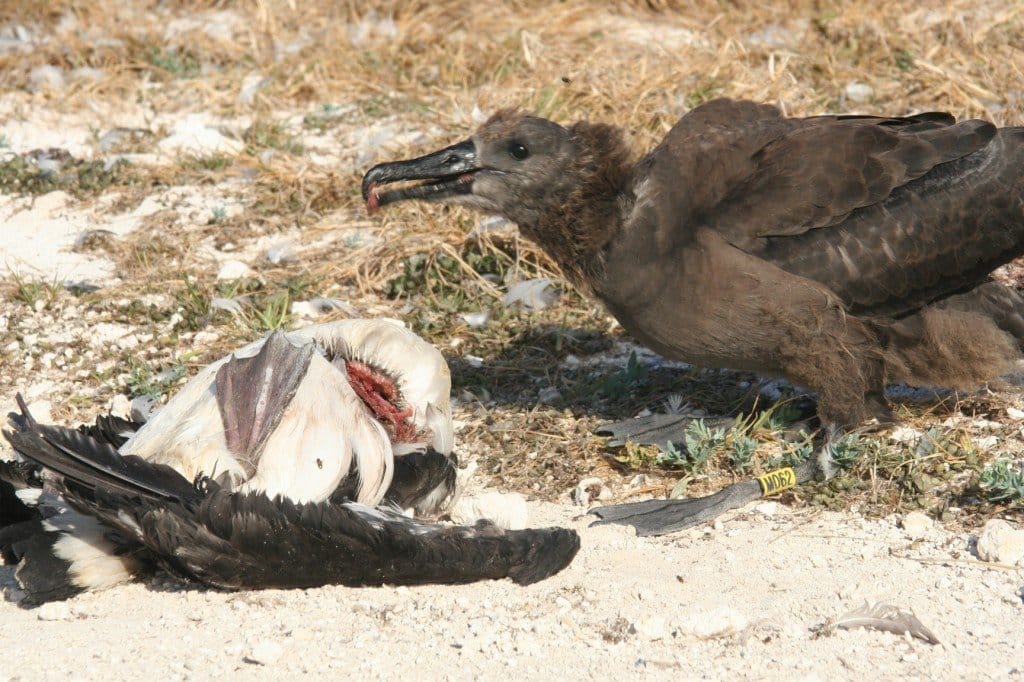
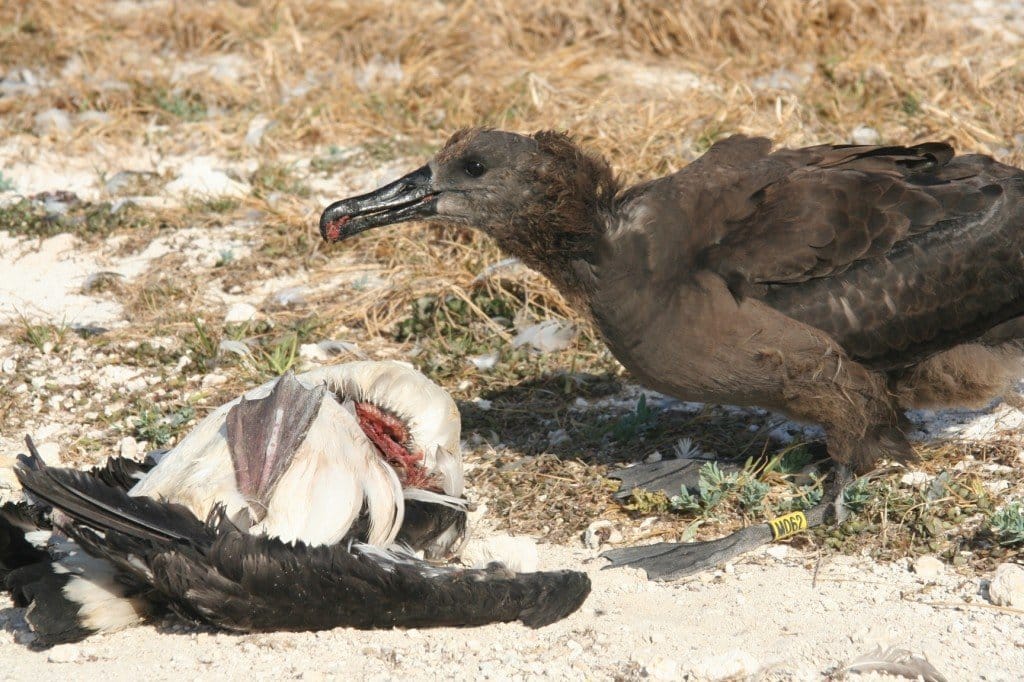










Leave a Comment